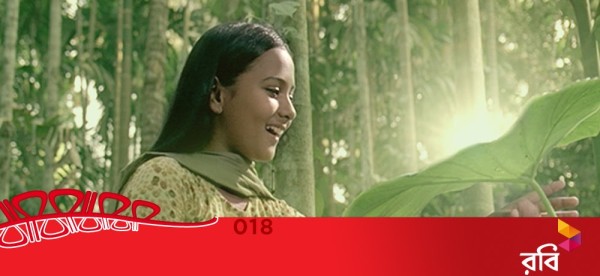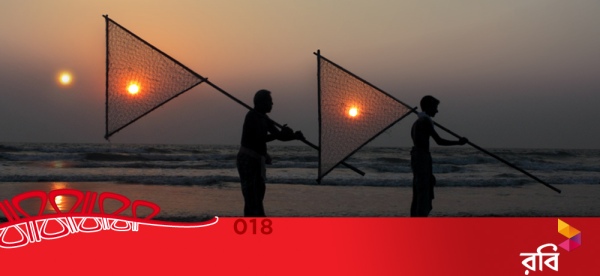SUMMARY
Limited resources, invested for the development of transport facilities, such as infrastructure and vehicles, coupled with the rapid rise in
transport demand, existence of a huge number of non-motorized vehicles on roads, lack of application of adequate and proper traffic management schemes are producing severe transport problems in almost all the urban areas of Bangladesh. Worsening situation of traffic congestion in the streets and sufferings of the inhabitants from vehicle emissions demand extensive research in this field. However, no detailed study concerning traffic congestion and pollution problems for urban areas of Bangladesh has yet been done. However, a number of news reporting nowadays regarding traffic pollution scenarios enhance me to write something on this issue. As I have been done some background study on traffic pollution problem of Bangladesh.
This article is focusing current situation of traffic pollution problem in Dhaka city based on a preliminary investigation. The daily total emissions of NOx, HC, CO, PM, and SOx are estimated and burdened to city's air and equivalent to: 42, 39, 314, 14, and 42 tons/day, respectively. Daily average concentration of NOx (NO2, NO) were measured at 28 street locations in Dhaka city during November, 1996. The results showed extremely high concentrations of NO2 and NO in each location.
BACKGROUND
Motor vehicles contribute significantly to emission inventories in certain regions specially on urban areas. The pollutant species most
often of concern with respect to transportation facilities are carbon monoxide (CO), hydrocarbons (HC), photochemical oxidants e.g., ozone (O3), nitrogen oxides (NOx), particulate matter (PM), and lead (Pb). In spite of great improvements in most developed countries due to reduced use of leaded fuels, highway emissions of lead remain a persistent air quality problem. Recent studies indicate that motor
vehicles are also a major or primary source of other toxic air pollutants including 1.3-butadiene, benzene and a number of carcinogens,
associated with particulate matter. As the vehicle fleet continues to grow, motor vehicle emissions and the products of their transformation in the atmosphere, random acceleration-deceleration due to non-motorized vehicles in developing countries, are becoming increasingly important contributors to nearly every major air pollution problem facing the world today. In urban areas, where more than 70% of the population live, levels of motor-vehicle related pollutants frequently exceed internationally agreed air quality guidelines.
In developed countries, governments have fought for clean air by regulating all major and many minor sources of air pollution. Industrial emissions have been significantly reduced. As a result of new motor vehicle emission standards introduced in 1988, new vehicles in developed nations are 90% cleaner than those manufactured in the 1970s. However, despite those substantial efforts, we continue to be plagued with air pollution problems. Major issues are the two stroke engines moving in Dhaka's street, heterogeneous flows of traffic and our continued and growing reliance on the private car. It is not out of subject to mention here that the two-stroke engines (Baby taxis) moving in Dhaka city are simple modified form of an Italian model of 1960's. It is estimated that a baby-taxi emit 30 times more pollution than a normal car. In providing a very simple logic, we can replace a baby taxi by 30 cars in Dhaka, considering the environmental point of view. Though baby-taxi size is a suitable mode for Dhaka's street geometry.
In Bangladesh, pollution severity occur due to the high content of lead in gasoline, large number of high polluting vehicles, impure fuel, inefficient landuse, and overall poor traffic management. The pollutants of concern for Bangladesh are leaded fuel, particulate matter, dust, oxides of nitrogen, and sulfur dioxide.
Dhaka has the highest lead pollution in the world for a part of the year, 1996, scientists at the Bangladesh Atomic Energy Commission (BAEC) observed (http://www.bangla.net/). A 17-month survey study by BAEC scientists detected 463 nanogram of lead in 1 cubic meter of air over Dhaka, during the dry months (November'5-January'6). In Bangladesh, all vehicles use leaded fuel because the country's only refinery is not able to produce lead-free fuel. The higher share of SOx emissions from automobiles, in Bangladesh is due to the poor fuel quality and the extensive use of diesel-powered in some cases impure diesel vehicles.
AIR POLLUTION IN BANGLADESH
Emission inventories of NOx and SOx have usually been made on national basis mainly for general administrative purposes and public information, systematic data published for the use of the scientific data is rather scarce. Nationwide SOx and NOx were calculated based on sulfur content and statistics of fuel consumption estimates of emission factors specific to individual source categories over time. Developing countries like Bangladesh is characterized by a rapid increase of energy consumption accompanied by a rapid growth of population and economic activities. Thus the increasing contribution of atmospheric loads of SO2 and NOx to global climate change is anticipated and it is really necessary to quantify these emissions in a hurried manner. A national steering committee should established with local and expatriate Bangladeshi experts to deal with the problem. The author have contacts with some academician in BUET who wish to do a joint research, a comprehensive study for urban pollution problem in Bangladesh.
AIR POLLUTION IN DHAKA
Dhaka, is the capital city of Bangladesh, has grown into a busy city of about 6.5 million people with an area of 815 km2. Dhaka city has
heterogeneous traffic flows, as of 1996 an estimated total of 168,718 automobiles are on road. A substantial part of total traffic is non-motorized vehicles enhance severe congestion and pollution problem specially in road intersections. Around 80% of total trips in Dhaka city is comprised of non-motorized transport (NMT) and only 5.9% trips are made by motorized transport (MT). Average trip length of MT is 27 minutes. Trips made by public transport specially buses are very low, only 0.9%. The maximum trips of vehicle modes are made by using rickshaw is 43%. Though it is very difficult to quantify pollution contribution from such heterogeneous traffic combinations, the influence of non-motorized transport on pollution are averaged upon the pollution considering the average speed of traffic flows. Based on data from different sources and road surveys conducted by the author the traffic pollution contribution in Dhaka city has been assessed and presented in the following sections.
TRENDS IN NATIONAL EMISSIONS
The primary objective of this section is to provide current estimates of nationwide emission for two major transportation pollutants: SOx
and NOx. Estimates are presented for 1981 to 1991 to give trends for national air pollutant emissions. An average of about 15% energy
consumed in transport sector in national level. A maximum of 18% transport energy consumption occur in 1990. An average of 34% NOx emission exhausted from transportation system to total emissions. On the other hand, the contribution from transportation SOx emission averaged 47%. Such high share of SOx emissions from automobiles is due to the high content of sulfur in petroleum products and extensive use of diesel fuel.
EMISSIONS IN DHAKA METROPOLITAN
The average daily traffic emissions of NOx, HC, CO, PM, and SOx are presented for Dhaka city. They are estimated based on the emission factors and total daily fuel consumption from 1981 to 1996. Data for fuel consumption available till 1992, on the other hand total daily trips are available till 1996, an average growth rate equals to that of daily trips are taken to estimate current trends in fuel consumption. The average daily trips of all modes of transport, average trip duration, mean running speed, and emission factors of kilometerage travel are also accounted for in estimating daily emission. Emission factors for kilometerage travel are always considered for 5 to 6 years old model vehicles. Because most of the vehicles imported in Bangladesh are reconditioned automobiles. Bangladesh only allow to import maximum 5 years old vehicles. As for example, in estimating emission in 1988, we used emission factors for 1981 vehicles. There is a fall in trends of fuel consumption in 1989, as a result sharp fall in emissions observed. In 1987 and 1988 there are severe floods affected about two-thirds of the total area inflicting severe damages. Capital stock losses were well over US $100 billion which seriously affected the national growth as well as the economy.
Emissions of nitrogen oxides are produced largely by transportation sources. Emissions of NOx have steadily increased over the period from 1989 to 1996 as the result of increased fuel combustion. From 1981 to 1988, the size of the change in emissions fluctuated. Transportation sources are the largest emitters of carbon monoxide. Major increase in emissions occur in pre-1989 period was in 1986, about 91 thousand tons of CO emitted from transportation systems as the result of increased motor vehicle travel.
AMBIENT NO2 CONCENTRATION IN DHAKA
Interest in ambient NOx concentration has increased due to health effects of this pollutant and its important role in the formation of photochemical oxidants; NO2 is also a precursor to species such as nitric acid and nitrate aerosols which contribute to acidification of the environment. In November of 1996, a field study conducted by the author to measure ambient NOx (NO, NO2) concentration in 28 street locations in Dhaka city. Two zones are divided to identify the severance of the problem of NOx. The high concentration locations (black spots), zone I and less polluted areas, zone II. Zone I is identified as the locations where NO2 concentration exceeded 40 ppb, and consequently zone II is those locations less than this level. Among 28 street locations 16 of them identified as the black spots, where NO2 concentration observed more than 40 ppb. Maximum concentration observed 64 ppb at Malibag area, followed by Bijoynagar 63 ppb, and then Shapla Chattar 57 ppb. The hourly average traffic flow from Mogbazar to Malibag link is 2613 veh/h with an average speed 22 km/h, Paltan to Bijoynagar link 2920 with an average speed 22.85 km/h, and Bijoynagar to Kakrail link 2711 veh/h and mean
vehicle speed 24.62 km/h.
CONCLUSIONS
Bangladesh has yet to be implemented a National Air Quality Standard, there are no detail air quality regulations based on which
Environmental Impact Assessment could be done. Very few works have been done on air quality measurements and national air pollutants estimates in Bangladesh. Author is willing to extend his assistance in doing any projects related to road traffic pollution in Bangladesh. Few recommendations are:
- A national steering committee constituting experts is urgently established to cope with the problem.
- Formulate guidelines for policy makers, city planners, traffic engineering practitioners towards mitigating traffic pollution problems and make recommendations for setting National Air Quality Standard.
- Auto-rickshaw (AR) should be restricted in Dhaka city. Consequently, an equivalent and efficient alternative mode of transport should initiate in Dhaka, so that, those who are importing AR, driving AR can do the same for the new mode of transport. Current initiative of taxi-cab is appreciating, however, the pre-conditions, NEW and 2000CC car seem to be policy makers ignorance in understanding modal choice in Dhaka. A pre-condition is really necessary that is "not the diesel car". As we are plagued with severe air pollution problem in Dhaka. What we need is to find an alternative equivalent of AR, that is environmentally friendly and is able to provide door-to-door service.
ACKNOWLEDGMENT
The author wish to confer his thanks to late Mr. Nowshad Bin Asheque and Mr. Rayhanul Islam for their cooperation in collecting
data from Bangladesh.





























